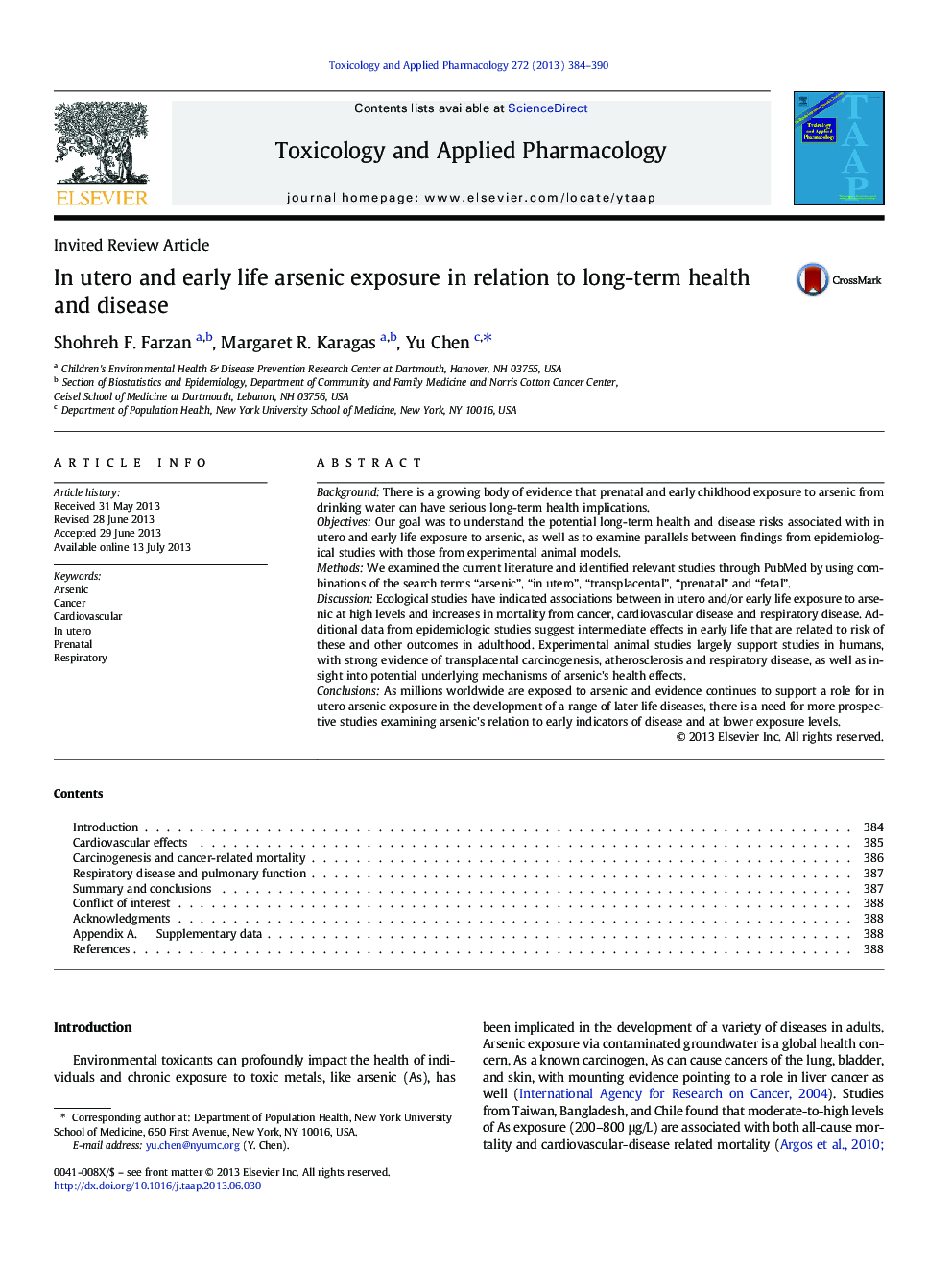| Article ID | Journal | Published Year | Pages | File Type |
|---|---|---|---|---|
| 5846633 | Toxicology and Applied Pharmacology | 2013 | 7 Pages |
â¢We review in utero and early-life As exposure impacts on lifelong disease risks.â¢Evidence indicates that early-life As increases risks of lung disease, cancer and CVD.â¢Animal work largely parallels human studies and may lead to new research directions.â¢Prospective studies and individual exposure assessments with biomarkers are needed.â¢Assessing intermediary endpoints may aid early intervention and establish causality.
BackgroundThere is a growing body of evidence that prenatal and early childhood exposure to arsenic from drinking water can have serious long-term health implications.ObjectivesOur goal was to understand the potential long-term health and disease risks associated with in utero and early life exposure to arsenic, as well as to examine parallels between findings from epidemiological studies with those from experimental animal models.MethodsWe examined the current literature and identified relevant studies through PubMed by using combinations of the search terms “arsenic”, “in utero”, “transplacental”, “prenatal” and “fetal”.DiscussionEcological studies have indicated associations between in utero and/or early life exposure to arsenic at high levels and increases in mortality from cancer, cardiovascular disease and respiratory disease. Additional data from epidemiologic studies suggest intermediate effects in early life that are related to risk of these and other outcomes in adulthood. Experimental animal studies largely support studies in humans, with strong evidence of transplacental carcinogenesis, atherosclerosis and respiratory disease, as well as insight into potential underlying mechanisms of arsenic's health effects.ConclusionsAs millions worldwide are exposed to arsenic and evidence continues to support a role for in utero arsenic exposure in the development of a range of later life diseases, there is a need for more prospective studies examining arsenic's relation to early indicators of disease and at lower exposure levels.
